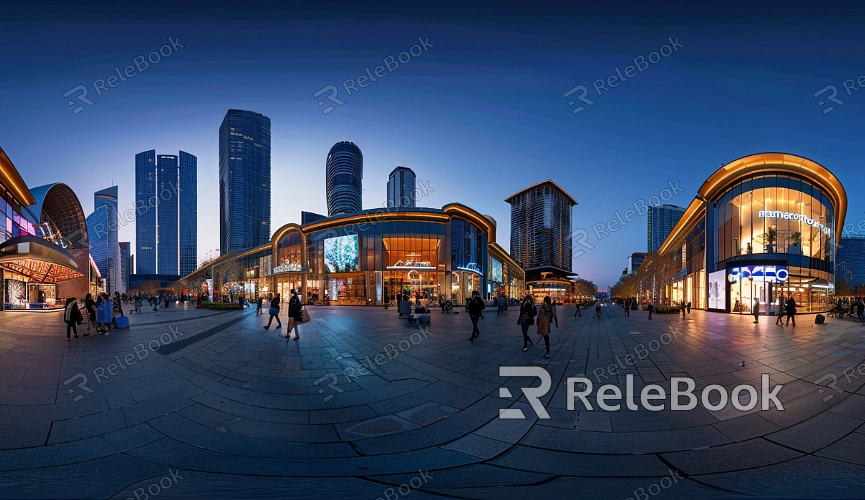What Does It Mean When Images in HDR Will Be Primed
HDR images are becoming increasingly prevalent in the world of 3D modeling and rendering, particularly in popular software like 3ds Max, Blender, and Maya. These images are employed to simulate realistic lighting conditions, enhance rendering quality, and add depth to scenes. However, designers often encounter the question: "What does it mean when HDR images will be primed?" This issue typically arises during the handling of complex scenes or high-resolution renders. In this article, we will explore what it means to optimize HDR images, why it’s necessary, common optimization methods, and the importance of this process in 3D design workflows.

1. The Need for Optimizing HDR Images
Performance Demands: Handling high-resolution HDR images can be resource-intensive. These images contain a wealth of lighting and color information, requiring significant memory and computational power for rendering. Optimizing HDR images helps reduce the computational load, thereby improving rendering speed and overall workflow efficiency.
Managing File Size: Unoptimized HDR images are often large in file size, consuming substantial disk space and potentially slowing down load and processing times. By optimizing these images, designers can significantly reduce file sizes while maintaining quality, making them easier to manage and store.
2. Key Methods of Optimization
Compression Techniques: By applying advanced compression algorithms, such as lossless or lossy compression, designers can effectively shrink the file size of HDR images. Lossless compression retains all the image data without any degradation in quality, whereas lossy compression sacrifices some quality in exchange for a much smaller file size.
Resolution Adjustment: In some scenarios, designers might opt to lower the resolution of HDR images to reduce file size and rendering time. While this may result in a loss of detail, lower resolution can still be sufficient for certain applications, such as distant backgrounds or less critical elements.
3. Impact of Optimization on Rendering Quality
Preserving Lighting Fidelity: Optimized HDR images maintain the essential lighting information while significantly reducing resource consumption. This allows the renderer to use system resources more efficiently, resulting in high-quality output. By carefully adjusting compression and resolution, designers can find the optimal balance between quality and performance.
Minimizing Noise and Artifacts: Unoptimized HDR images can introduce noise and artifacts during rendering, affecting the final image quality. Through optimization, these issues can be mitigated or eliminated, leading to cleaner, sharper renders.

4. Common Tools for HDR Image Optimization
Adobe Photoshop: Photoshop offers a suite of tools for processing and optimizing HDR images. Designers can use its built-in HDR merging and advanced compression algorithms to fine-tune their images for optimal performance.
Blender: In Blender, designers can leverage the node system to adjust the brightness, contrast, and tonal range of HDR images, optimizing their performance in renders. Additionally, Blender’s compression options allow for further refinement during the output process.
3ds Max: 3ds Max provides powerful rendering settings that enable designers to optimize HDR images during the rendering process. Adjustments to light sampling and image filtering settings can reduce render times and enhance image quality.
5. Why Optimizing HDR Images is Essential
Boosting Rendering Efficiency: Optimized HDR images allow the renderer to process image data more efficiently, reducing rendering times, especially in complex scenes or animations. This is crucial for time-sensitive projects.
Improving Storage and Management: With a smaller footprint, optimized HDR images take up less storage space, making project files easier to manage and back up. Smaller files also translate to faster transfer speeds, whether on local networks or cloud storage.
Enhancing Project Flexibility: By optimizing HDR images, designers can adapt them to different scenarios without sacrificing quality. Whether it’s for final high-quality renders or quick previews and tests, optimized images offer the versatility needed to meet various demands.
Understanding the importance and methods of optimizing HDR images allows 3D designers to better manage and utilize these resources, enhancing both efficiency and the quality of final outputs. If you’re in need of high-quality HDR images, textures, or models, Relebook is a platform worth exploring. Relebook offers a wide range of resources that can be seamlessly integrated into your design software, helping you achieve professional-grade rendering results with ease.

